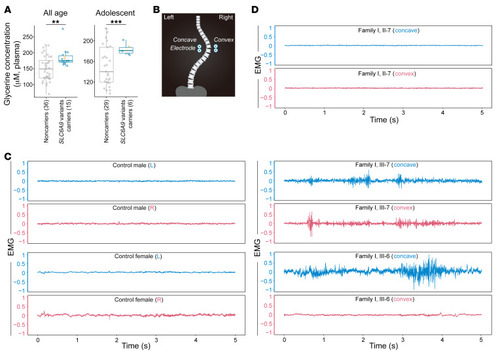Figure 2
- ID
- ZDB-FIG-240116-4
- Publication
- Wang et al., 2023 - Impaired glycine neurotransmission causes adolescent idiopathic scoliosis
- Other Figures
- All Figure Page
- Back to All Figure Page
|
Plasma glycine concentration and paraspinal muscle activity in ( |

